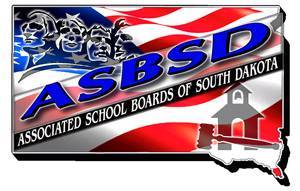It’s been three months since the State implemented the half-penny sales tax the legislature passed.
House Bill 1182 provided the means for schools to raise teacher salaries based on the infusion of $67 million into the new state aid formula. As expected, school districts provided raises to teachers using those funds through their collective bargaining process and the school year begins with raises in place.
But, is the issue of the sales tax increase completely settled?
In July, members of the S.D. Legislature’s Appropriations Committee heard a report from the Bureau of Finance and Management that revealed a slight decrease (less than one percent) in sales tax projections for fiscal year 2017 from the estimates adopted during the legislative session.
BFM’s report showed the Legislature’s FY17 Sales and Use Tax adopted estimate, of a little more than $1 billion, exceeded July’s projection by $7.8 million.
It’s still early in the fiscal year and appropriators will be watching the effect of the half-cent increase on sales tax as the 2017 Legislative Session approaches, as the Legislature appropriated an additional $107 million in FY17 for teacher salaries, tech schools and property tax replacement.
Following this year’s ASBSD-SASD Convention, a question arose about the connection between the new state aid formula and the provision in the law regarding a possible internet sales tax.
The issue: Does the section in HB 1182 calling for the replacement of the half-cent increase to the sales tax with online sales tax revenues affect how much money schools should be entitled to receive under the new state aid formula?
Senate Bill 131 requires an annual increase in state aid of three percent or inflation (CPI-W), whichever is less, as wells as a review every three years of teacher salaries in surrounding states. The inflationary index is required by law, thus the State has an obligation to provide for that increase in funds regardless of which revenue source it comes from.
While an argument was made at Convention that the online sales tax provision in HB 1182 would replace dollars previously raised by the half-penny sales tax by one-tenth for every $20 million in online sales tax revenue collected, it does not have an impact on the State’s fiduciary responsibility to fund the state aid formula.
These provisions are separate parts of the statute.
Hypothetical online sales tax, which still could be years in development, is a revenue source and is not directly linked to the funding formula. The inflationary increases are required by law regardless of what happens to possible online sales tax revenue or any other form of state revenue.
Regardless of the moving parts revolving around the State’s Sales and Use tax, it’s important for everyone involved in education to stay informed about the fiscal dynamics involved on the revenue side of education.
As the school year and FY17 march on, we will have to keep a close eye on whether or not the half-cent increase will hit its estimated mark.
